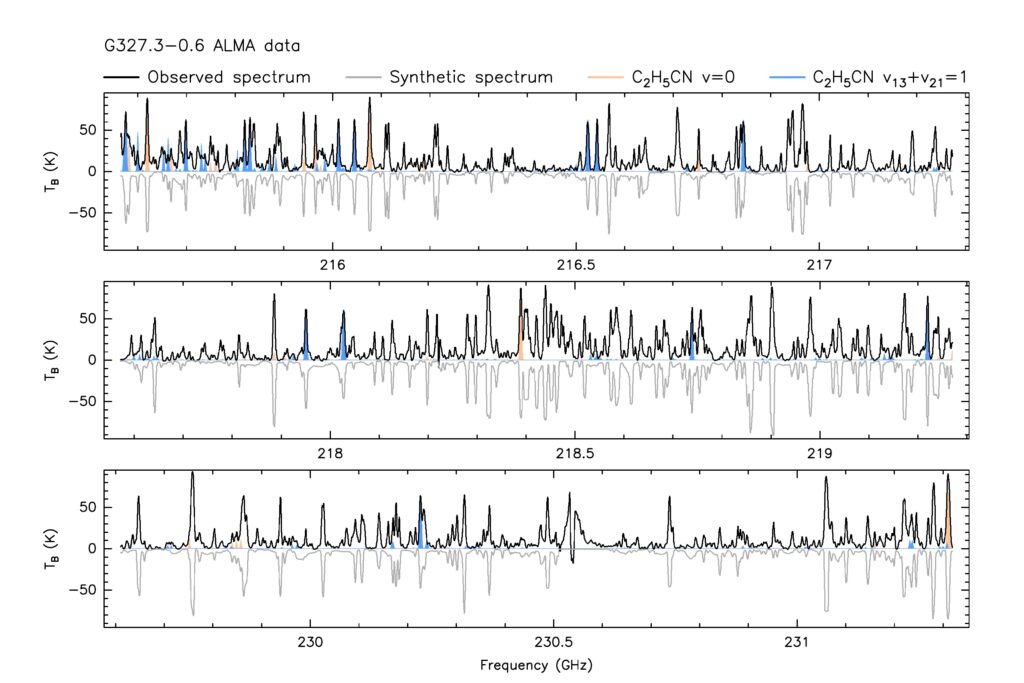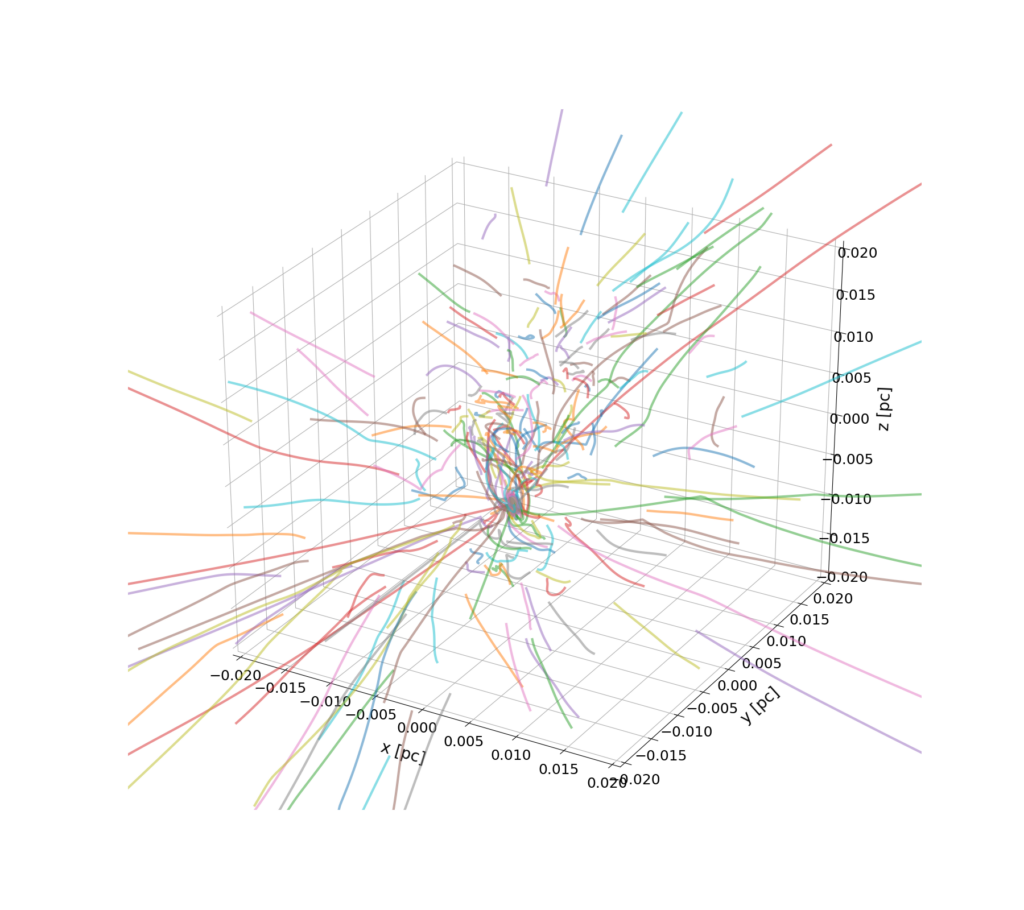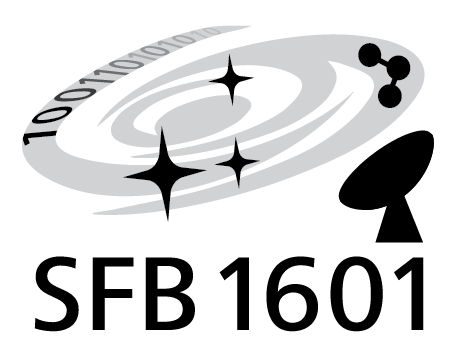Project leader: Schilke, Peter (PH1)

A2 aims at investigating the central structures of Galactic high-feedback regions, i.e. the most massive and active star-forming regions in a variety of environmental conditions. Using high-resolution, multi-frequency observations and comparing them with chemically post-processed MHD models, we want to shed light on the energetics of these regions: thermal structure, feedback energy in the form of mechanical (outflows, shocks) or radiative (IR, UV) contributions. The chemical composition will allow us to access also the past development, since due to the relatively long chemical timescales, there is a chemical memory, that can potentially be accessed through sophisticated modelling. The success (or failure) of models to reproduce observations will give important constraints on their validity: adopted initial conditions, approximations of physical processes and external influences such as turbulence.
This requires both extensive observations and sophisticated modelling. We are well equipped to tackle this task, both by past experience and by close access to both laboratory data (A4), which is particularly needed to access the hottest parts close to the emerging stellar sources through vibrationally excited lines, which often are not yet available in the catalogs; and sophisticated MHD modeling in A5. The connection with larger scales will be done in conjunction with B1.

Publications
2025
The Cygnus Allscale Survey of Chemistry and Dynamical Environments: CASCADE: IV. Unveiling the hidden structures in DR18 Journal Article
In: A&A, vol. 694, pp. A30, 2025.
References
- Beltrán, Rivilla, Cesaroni, Galli, Moscadelli, Ahmadi, and 12 co-authors including, and Schilke, “The sharp ALMA view of infall and outflow in the massive protocluster G31.41+0.31”, A&A 659, A81 (2022).
- Choudhury, Schilke, Stéphan, Bergin, Möller, Schmiedeke, and Zernickel, “Evolution of complex or- ganic molecules in hot molecular cores. Synthetic spectra at (sub-)mm wavebands”, A&A 575, A68(2015).
- Endres, Martin-Drumel, Zingsheim, Bonah, Pirali, and 9 co-authors including, Schilke, and Schlem-mer, “SOLEIL and ALMA views on prototypical organic nitriles: C2H5CN”, Journal of Molecular Spec-troscopy 375, 111392 (2021).
- Meng, Sánchez-Monge, Schilke, Padovani, Marcowith, Ginsburg, Schmiedeke, Schwörer, et al., “Thephysical and chemical structure of Sagittarius B2. V. Non-thermal emission in the envelope of Sgr B2”,A&A 630, A73 (2019).
- Pols, Schwörer, Schilke, Schmiedeke, Sánchez-Monge, and Möller, “The physical and chemical struc-ture of Sagittarius B2. III. Radiative transfer simulations of the hot core Sgr B2(M) for methyl cyanide”,A&A 614, A123 (2018).
- Sadaghiani, Sánchez-Monge, Schilke, Liu, Clarke, Zhang, Girart, Seifried, et al., “Physical propertiesof the star-forming clusters in NGC 6334. A study of the continuum dust emission with ALMA”, A&A635, A2 (2020).
- Sánchez-Monge, Schilke, Schmiedeke, Ginsburg, Cesaroni, Lis, Qin, Müller, et al., “The physical andchemical structure of Sagittarius B2. II. Continuum millimeter emission of Sgr B2(M) and Sgr B2(N)with ALMA”, A&A 604, A6 (2017).
- Schmiedeke, Schilke, Möller, Sánchez-Monge, Bergin, Comito, Csengeri, Lis, et al., “The physicaland chemical structure of Sagittarius B2. I. Three-dimensional thermal dust and free-free continuummodeling on 100 au to 45 pc scales”, A&A 588, A143 (2016).
- Schwörer, Sánchez-Monge, Schilke, Möller, Ginsburg, Meng, Schmiedeke, Müller, et al., “The physicaland chemical structure of Sagittarius B2. IV. Converging filaments in the high-mass cluster formingregion Sgr B2(N)”, A&A 628, A6 (2019).
- Stéphan, Schilke, Le Bourlot, Schmiedeke, Choudhury, Godard, and Sánchez-Monge, “Chemical mod-eling of internal photon-dominated regions surrounding deeply embedded HC/UCHII regions”, A&A 617, A60 (2018).
